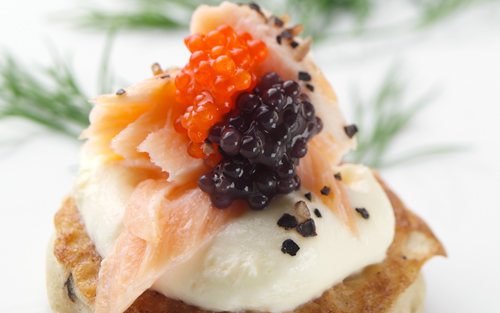History of Caviar – Long A Delicacy

The history of manufacturing black caviar and delicacies of sturgeon and other fishes goes far deep into centuries.
Caviar has long been associated with fine dining. Caviar, be it Beluga Caviar or Russian Caviar is generally indicative of a celebratory lunch or a romantic dinner or a luxurious celebrity party.
True caviar is the roe of any of the species of sturgeon or salmon. The roe or eggs are sieved to remove fatty tissue and membrane. It is then lightly salted with non-iodized salt.
The rise and fall of the American caviar industry, which went from boom to bust in the thirty years that ended the 19th century, was just a pre-cursor to the gradual extinction of the Sturgeon stocks through the course of the late twentieth century.
One outcome was the rise of to the two great Caviar houses of the 19th and 20th centuries, Dieckmann & Hansen and Petrossian. The challenge they endured was the lucrative, yet fateful relationship with the Soviet government.
Along with the collapse of the Soviet Union, came centrally enforced quotas on the sturgeon catch, and accelerated the extinction of these ancient fish stocks.
As Soviet industry collapsed, the Russian fishing industry battled with free enterprise as poaching became rampant and buccaneers seized on the opportunity to make money on the Wests’ unrelenting desire for the luxury fish eggs.
Through the 1990’s the United States became the single largest consumer of caviar outside of Russia, tripling the “official” amount imported between 1991 and 1997, from 32 tonnes to 95 tonnes annually.
Ironically, “as caviar became mainstream, it also became cheap… as long as the Soviet Union was around to set prices, caviar was exempt from the gravitational pull of supply and demand. But once the communists were out of the picture, the roe became just another furiously traded commodity.”
As the price fell out of the caviar market, a vicious circle evolved where poachers needed to catch more sturgeon and ship more caviar, to make the same amount of money; and as sturgeon stocks declined, the roe less abundant, the poachers began to improvise, often adding the roe of other fish, like the Paddlefish, to increase the volume of their “beluga” caviar.